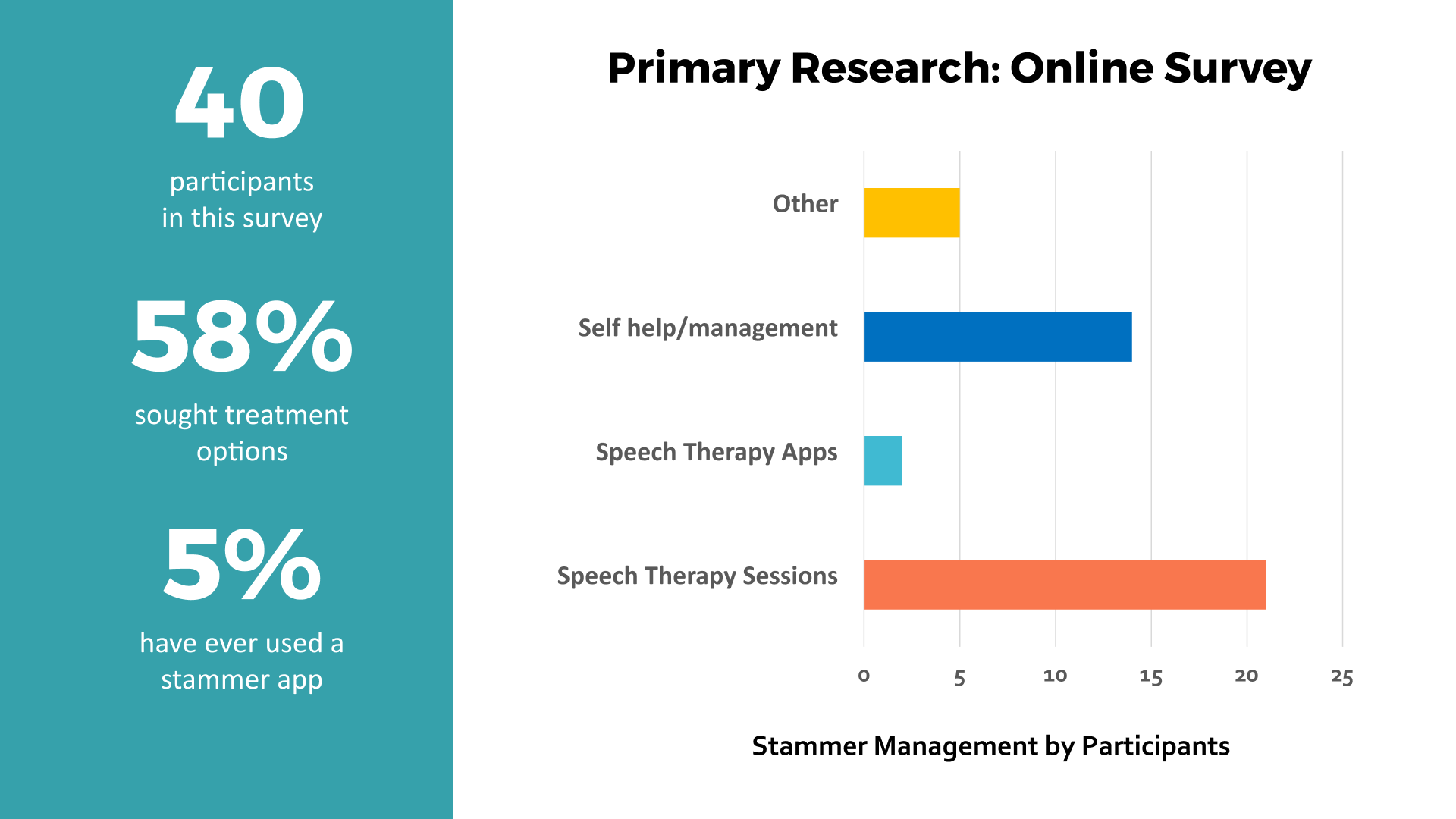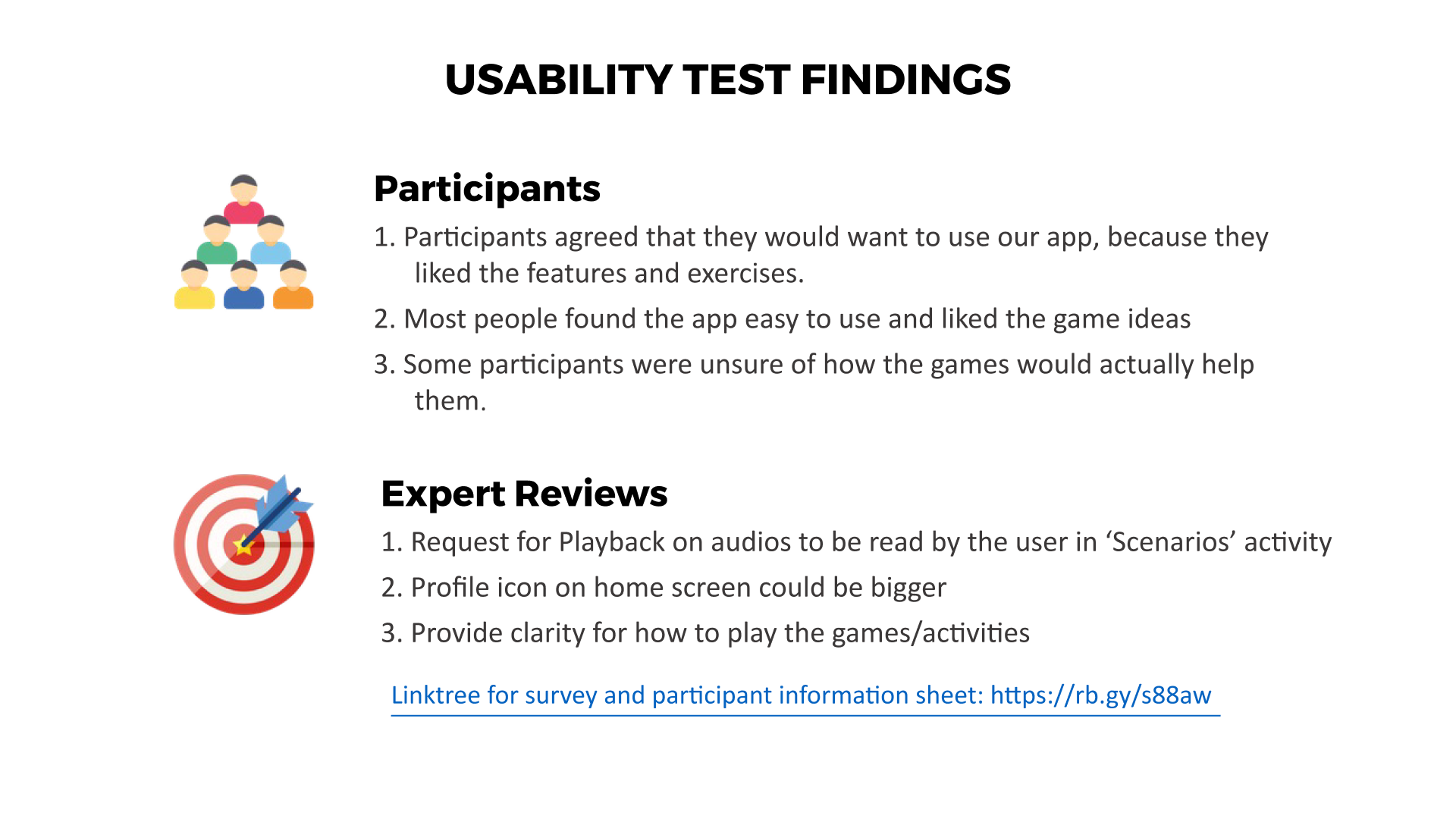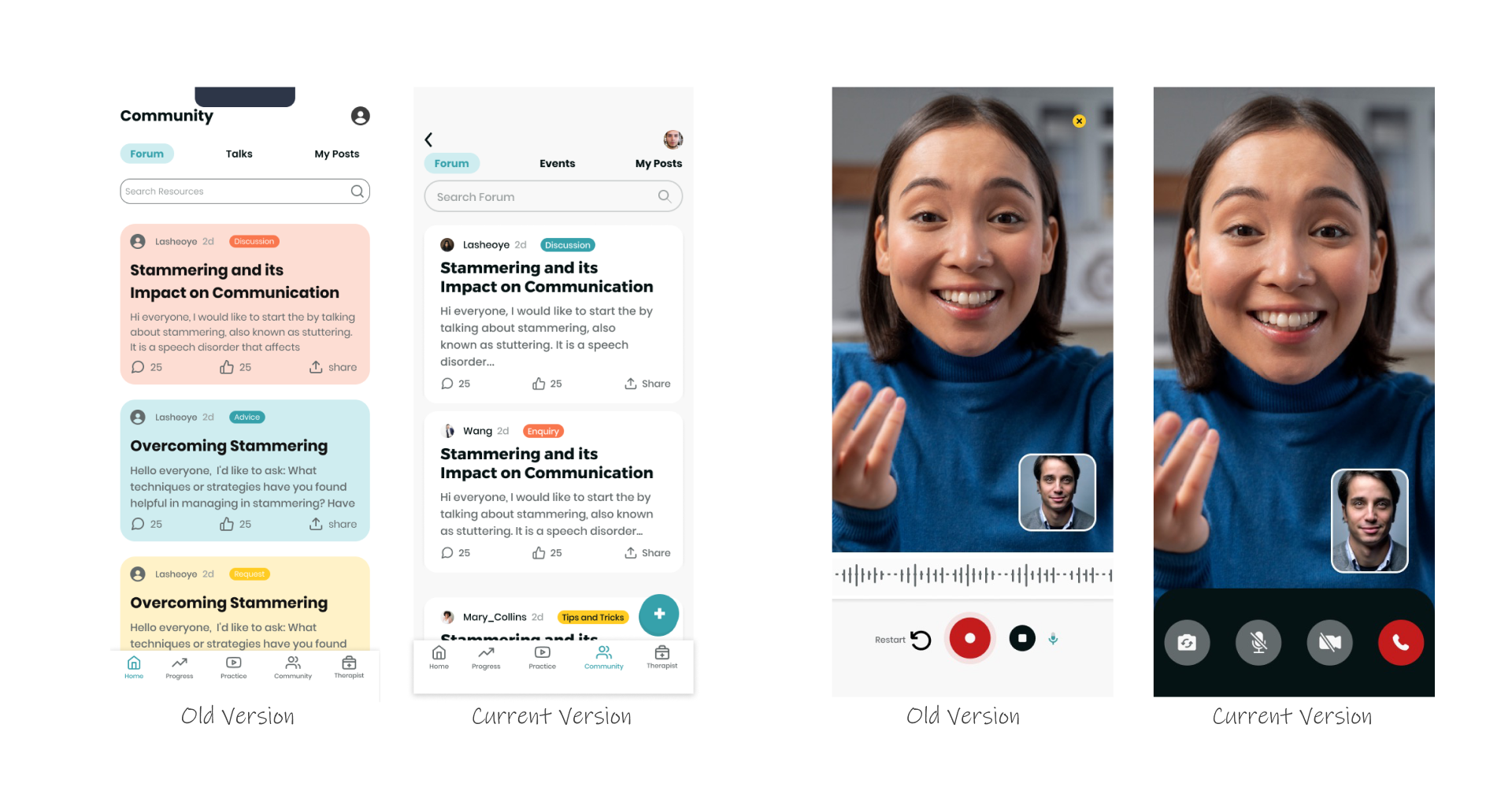- UI/UX Design
- Brand Design
- Case Study
OVERCOMING STAMMERING THROUGH PLAYFUL PRACTICE
Speakerr is a collaborative project I led during my Masters with a team of fellow UX Designers and Researchers to provide a speech therapy mobile app solution for people who stammer.
My Role:
- Leadership and Collaboration: I took the initiative and led a team of UX designers and researchers throughout the Speaker project, fostering a collaborative environment to ensure all design decisions were well-informed.
- Ideation and Hi-Fidelity Designs: I actively participated in the design process, spearheading brainstorming sessions during the ideation phase. I contributed by creating initial sketches and then designed all high-fidelity screens for the app, excluding the community features.
- Interactive Prototyping: To effectively communicate our design vision, I developed an interactive prototype for presentations and demonstrations in collaboration with my team.
Brand Identity: Leveraging my graphic design skills, I created the logo and style guide for Speaker, establishing a cohesive visual identity for the app.
CLIENT
UX Design Course, Birmingham City University
INDUSTRY
Health
Nonso Nweke (me) – UX Designer/Team Lead
Bisola Oyekan – UX Designer
Parris Duplan – UX Researcher
Sujata Paudal – UX Copywriter
TOOLS
Figma, Adobe Illustrator
PLATFORM
Mobile App




























IMPACT & OUTCOMES
Usability Testing Results:
- Conducted a usability test with 9 participants to evaluate the ease of use and user experience of the Speaker app.
- Achieved an average System Usability Scale (SUS) score of 70, indicating above average usability. The SUS score is a standard metric used to gauge user satisfaction with a product’s usability.
Positive User Feedback:
- User testing yielded positive feedback. Participants commented on feeling relaxed and comfortable practicing their speech with the app.
- They particularly appreciated the practical scenario games, which they felt would be helpful in simulating real-life situations where they might experience stammering.
Future Directions:
- Expanding the user base for further testing.
- Implementing additional features based on user feedback.
- Development of the mobile app.
- Conducting a longitudinal study to track long-term user progress and impact.
CHALLENGES: FROM DISCUSSION TO CONSENSUS
Collaborative Approach to User Testing:
During the Speaker project, a difference in opinion arose regarding user testing methodology. While the initial plan involved video interviews with established research participants who stammer, a team member (Parris Duplan) advocated for recruiting participants through Reddit surveys.
Open Communication and Evidence-Based Decisions:
To ensure the project’s academic integrity and data quality, I initiated a discussion to explore both approaches. We reviewed relevant references highlighting the potential drawbacks of recruiting participants through anonymous online surveys, particularly regarding the validity and control over participant demographics.
Mutual Respect and Team Focus:
The discussion emphasized respect for diverse viewpoints while prioritizing the project’s overall success. Ultimately, we reached a consensus on maintaining the original plan of video interviews with validated participants, ensuring a robust and reliable user testing process.
BEYOND DESIGNS; VALUABLE LESSONS LEARNT
Developing Speaker wasn’t just about crafting an engaging app; it was a journey of learning and growth. Here are some key takeaways:
Importance of User Research Methodology: The Speakerr project highlighted the importance of selecting the right user research methodology. While alternative approaches were considered (e.g., Reddit surveys), the project ultimately benefited from the decision to conduct video interviews with validated participants who stammer. This ensured data quality and allowed for a more in-depth exploration of user needs and experiences.
Effective Communication and Conflict Resolution: The project also showcased the value of effective communication and conflict resolution. The disagreement with a team member (Parris Duplan) regarding user testing methodology was addressed through open communication and a focus on evidence-based decision making. This resulted in a collaborative solution that prioritized research integrity and project success.
The Value of Iterative Design: The Speaker project emphasized the importance of iterative design. Throughout the development process, user feedback from usability testing played a crucial role. By iteratively refining the app based on this feedback, we ensured it met the evolving needs of users who stammer and provided an optimal user experience.
The Power of Collaboration: Speaker underscored the power of collaborative teamwork. The project involved designers, researchers, and potentially other stakeholders. Working effectively together, respecting diverse perspectives, and fostering open communication were crucial for the successful development of the app.
THANKS FOR STOPPING BY
Feel free to get in touch